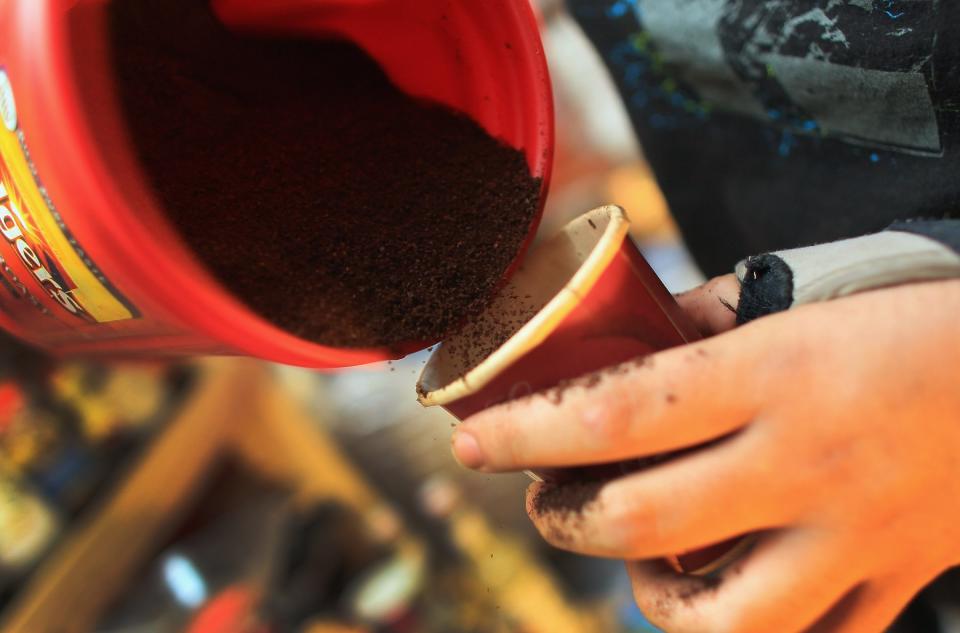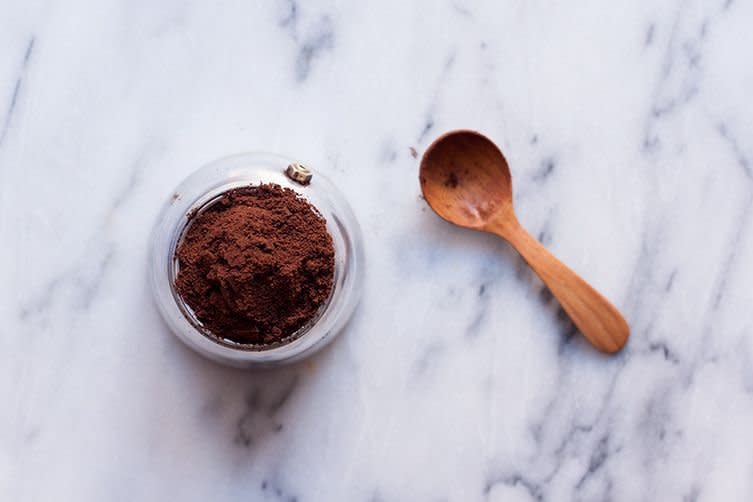Here's how coffee could save the US from another water crisis like Flint

David Joyce/Flickr
We’re all familiar with the never-ending debate over whether drinking coffee has health benefits or risks, but you probably don’t know that the popular pick-me-up could save lives.
In a study published this month by the Italian Institute of Technology (IIT), researchers identified coffee grounds as a potentially game-changing medium that can cleanse drinking water polluted by lead and mercury.
The issue of heavy metals contaminating a community’s water supply became a public health crisis in America, after thousands of residents in Flint, MI, were exposed to drinking water that had high levels of lead. As a cost-cutting measure, officials changed the city’s water source from Lake Huron and the Detroit River to the Flint River in 2014, but failed to treat aging pipes with corrosion inhibitors that would’ve prevented lead from leaching into the water.
Using a United States-patented technique that creates polymer-based foams out of different kinds of agricultural byproducts, researchers developed a coffee grounds-based foam that they placed in different concentrations of lead- and mercury-infused water to act as a filter (by weight, the foam is about 60% coffee).
At the lowest level of lead concentration tested—35 parts per million—the coffee filter removed a whopping 99% of lead from the water over a 30-hour period, according to the study.

David Joyce/FlickrResearchers also found that the lighter the lead concentration, the better the coffee foam was at removing it. This is a positive sign for real-world applications because even the lowest lead levels tested in the lab were nearly three times as polluted as the
worst of the water samples found in Flint (13 parts per million).
“We saw that the foam can remove about 13mg of lead ions and 17mg of mercury for every one gram of foam,” Despina Fragouli, one of the study’s lead authors, told me.
The potential for this kind sustainable technology can’t be overstated. The U.S. Centers for Disease Control estimates that “at least 4 million households have children living in them that are being exposed to high levels of lead.” Overexposure to the metal—which often happens by drinking water that’s been contaminated—can lead to behavioral and learning problems, lower IQ, hyperactivity, slowed growth, and hearing problems in children, and can also harm adults, according to the Environmental Protection Agency. In the U.S., it has historically affected inner city black populations the most (more than half of Flint’s population identifies as black). Worldwide, lead poisoning is also a major health concern.
Previous studies already found that coffee grounds could be used to remove heavy metals when dropped into drinking water. The metal particles tend to attach themselves to coffee in a process called adsorption. But this potential solution introduced another problem: How do you get loose coffee grounds out of the now-murky water? Complex filtration or centrifuge systems would have to be developed, but they’re impractical and costly. That’s why IIT’s technology is such a potential gamechanger.

David Joyce/Flickr
“You just dip the foam in the water, you wait, and then you just remove the foam,” said Fragouli. “We can imagine that we use this type of foam, for example, to coat the walls of a container that contains polluted drinking water, or coating a bigger container that holds industrial waste, before it gets released into the environment.”
The Italian government-funded IIT conducted lab tests on other foams, and found that they’re fully biodegradable. Although tests have yet to be done on the coffee-ground foam, Fraugouli said, “We expect that this material will also be biodegradable in the end.”
Following this success, her team is now focusing on how to improve the technology so it can extract the smallest hints of lead in water, as even tiny amounts are considered unsafe. The EPA considers water with more than 15 parts per billion of lead to be a health risk.
Down the line, Fraugouli plans to collaborate with “industries that produce spent coffee” to scale up production. But for now, local sources are providing enough raw material to produce the modest batches of coffee-ground foam that researchers have tested.
“In Italy, we drink a lot of coffee and so we have a lot of spent coffee,” Fragouli told me, adding that her team actually experimented on coffee “from the cafeteria.”
NOW WATCH: An exercise scientist reveals how to get six-pack abs
See Also:

 Yahoo News
Yahoo News 

